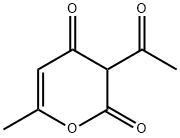Nantong Tianxiang Bioengineering Co., Ltd
Telephone0513-5666452 4006716686
Websitehttps://www.chemicalbook.com/ShowSupplierProductsList959715/0.htm
J & K SCIENTIFIC LTD.
Telephone010-82848833 400-666-7788
Websitehttp://www.jkchemical.com
Meryer (Shanghai) Chemical Technology Co., Ltd.
Telephone4006608290; 18621169109
Websitehttps://www.meryer.com/cn/index/
3B Pharmachem (Wuhan) International Co.,Ltd.
Telephone821-50328103-801 18930552037
Websitehttps://www.chemicalbook.com/ShowSupplierProductsList13285/0.htm
Alfa Aesar
Telephone400-6106006
Websitehttp://chemicals.thermofisher.cn
TCI (Shanghai) Development Co., Ltd.
Telephone021-67121386
Websitehttps://www.tcichemicals.com/CN/zh/
BeiJing Hwrk Chemicals Limted
Telephone0757-86329057 18501085097
Websitehttp://www.hwrkchemical.com
Energy Chemical
Telephone021-021-58432009 400-005-6266
Websitehttp://www.energy-chemical.com
Capot Chemical Co., Ltd
Telephone+86 (0) 571 85 58 67 18
Websitehttp://www.capotchem.com/
Beijing Ouhe Technology Co., Ltd
Telephone010-82967028 13552068683
Websitehttp://www.ouhechem.com/
JinYan Chemicals(ShangHai) Co.,Ltd.
Telephone13817811078
Websitehttp://www.jingyan-chemical.com/
shanghai science Bio-Pharmceutical.co,ltd.
Telephone021-021-57872719 13761402923
Websitehttp://www.freefluor.com
Nanjing Chemlin Chemical Co., Ltd
Telephone025-83697070
Websitehttp://www.echemlin.cn
Shanghai Hanhong Scientific Co.,Ltd.
Telephone021-54306202 13764082696;
Websitehttps://www.hanhongsci.com
Syntechem Co.,Ltd
Telephone
Websitehttp://www.syntechem.com/
BEST-REAGENT
Telephone400-1166-196 18981987031
Websitehttp://www.hx-r.com/
Tianjin heowns Biochemical Technology Co., Ltd.
Telephone400 638 7771
Websitehttp://www.heowns.com
Sinopharm Chemical Reagent Co,Ltd.
Telephone86-21-63210123
Websitehttp://www.reagent.com.cn
